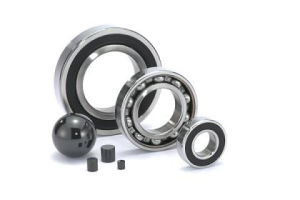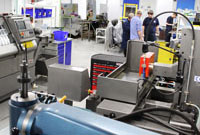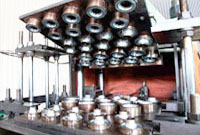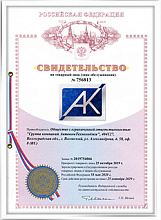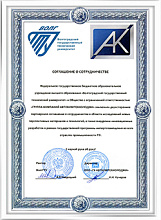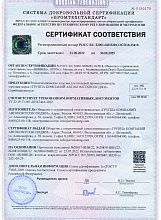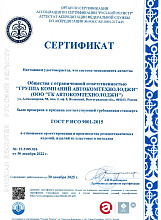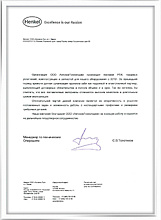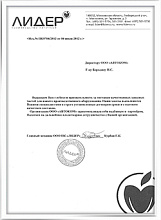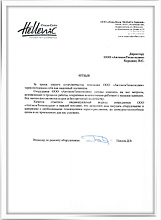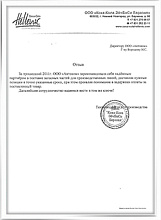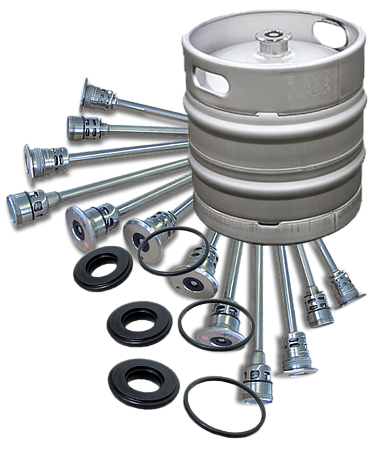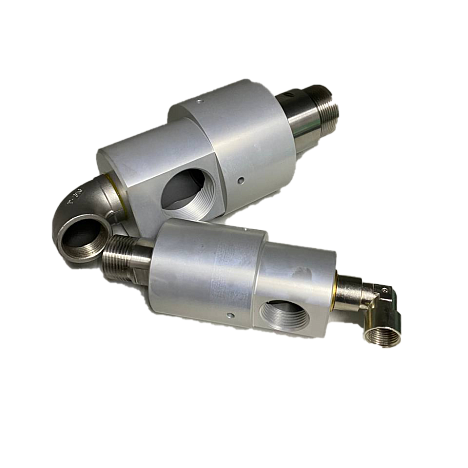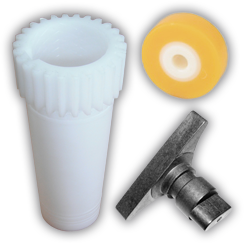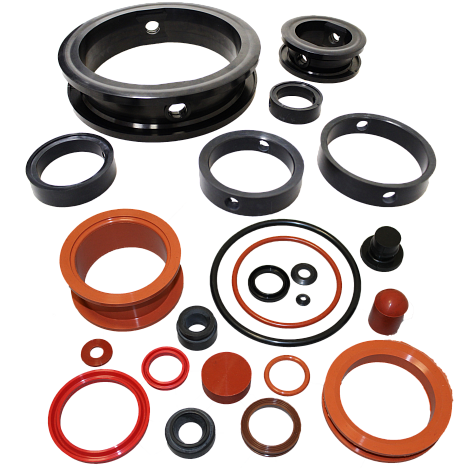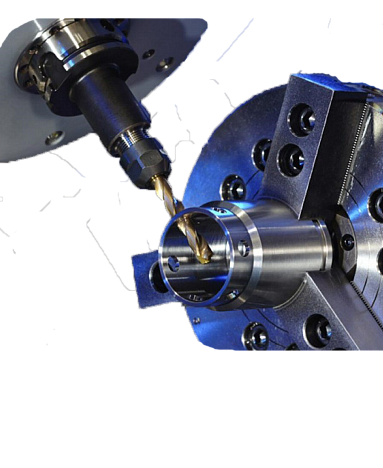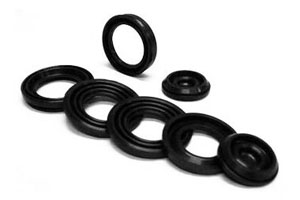
NBR – butadiene-nitrile rubber - copolymer of butadiene and acrylonitrile. NBR is considered standard material of epiploons. Material provides good resistance of an epiploon to oils, fuels, water, hydraulic liquids on an oil basis.
Properties
NBR possesses high hardness and for rubber elastomers rather high resistance to attrition (110 mm3). Temperature limit of application: from -30 °C to +100 °C (about +120 °C are short-term). At high temperatures aging at the expense of what material becomes firm and fragile is accelerated. It begins in the oxygen atmosphere (air) approximately at 80 °C, at air access overlapping process of aging is considerably slowed down (for example, in hot oil). This elastomer possesses low ozone resistance, to weather influence and aging (it is careful at storage). Swelling in mineral oils is very insignificant, however is in strong dependence on composition of oil.
Resistance data
|
Good resistance |
Average resistance |
Low/zero resistance |
|
Mineral oils |
Fuel to 40% of aromatic components (the leaded fuel) |
Aromatic hydrocarbons (toluene, benzene) |
|
Aliphatic hydrocarbons (propane, butane, gasolines) |
Biologically decaying hydraulic liquids |
The chlorinated hydrocarbons (trichlorethylene, tetrachloroethylene) |
|
Water |
- |
Brake fluids on the basis of glycol |
|
Poor flammable pneumatic liquids of the HFA, HFB and HFC groups |
Silicone oils and fats (oils can cause reduction) |
Poor flammable pneumatic liquids of the HFD group |
|
Vegetable and animal oils and fats |
- |
Acetone, acetum-acid ethyl ester |
|
Diesel fuel |
- |
- |
|
A large amount of the diluted acids and the bases, salt solutions at the room temperature |
- |
- |
Application
NBR it is applied generally in those areas in which along with high combustible and mineral oils resistance high elasticity and low residual deformation is also required.
Main physical and mechanical charatceristics of NBR
|
Properties |
Unit of meas. |
Value |
Testing rate |
|
Hardness |
SHORE A |
85±5 |
DIN 53505 |
|
Density |
g/cm3 |
1,32±0,02 |
DIN 53479 |
|
Tensile strength |
N/mm2 |
≥15 |
DIN 53504 |
|
Tension strength |
% |
≥130 |
DIN 53504 |
|
Permanent deformation 100oС/22h |
% |
≤12 |
DIN 53517 |
|
Rebound elsticity |
% |
22 |
DIN 53512 |
|
Abrasion capacity |
mm3 |
110 |
DIN 53516 |
|
Minimum application temperature |
oС |
-30 |
- |
|
Maximum aplication temperature |
oС |
+100 |
- |
|
Behavior in ASTM oil nom.1 n. DIN 53521 70h/110°С: |
SHORE A |
+6 |
DIN 53505 |
| Behavior in ASTM oil nom.3 n. DIN 53521 70h/110°С: change of hardness, change of volume |
SHORE A % |
0 +1 |
DIN 53505 DIN 53521 |
| Behavior in air 70h/100°C: change of hardness, change of volume | SHORE A % |
+3 0 |
DIN 53505 DIN 53521 |
|
Behavior in water 70h/100°C: change of hardness, change of volume |
SHORE A |
0 |
DIN 53505 |
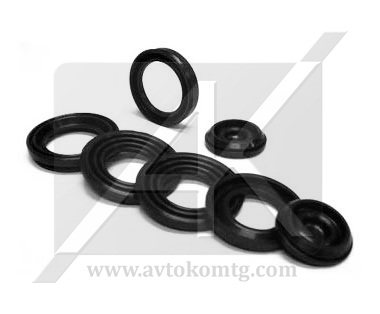

NBR is widely used for production of epiploons, a conveyor tape thanks to low cost (in comparison with other basic polymers), to low swelling, good oil resistance and wear resistance. The greatest lack of a nitrile of weak resistance to the increased temperatures: material hardens, cracks, loses ability to trace a shaft beating. At low temperatures of NBR becomes inelastic, can collapse at rotation of a shaft.
The AvtokomTehnolodgy group of companies uses this material for production of various rubber products, proceeding from specifications of area of their application. Butadiene - nitrile rubber is applied at production of mechanical seals for pumps, such firms as Hilge, KSB, Grundfos, Packo, Ebara, Wilo, Tuchenhagen,
Alfa Laval, APV, Fristam, etc.
 en
en
 Русский [ru]
Русский [ru]

